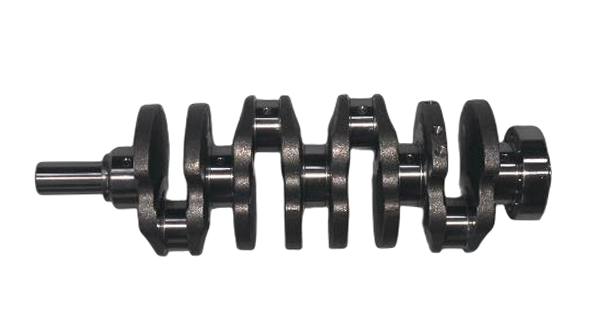The Heart of Your Car’s Engine Explained
The crankshaft converts the reciprocating motion of pistons into rotational motion to power vehicle wheels. This critical engine component also balances vibrations and supports rotating assemblies like pistons and flywheels.

Core Function
Motion Conversion: Transforms linear piston movement into rotational energy through offset crankpins.
Force Distribution: Transmits power to accessories (alternator, water pump) and the transmission via the flywheel.
Operational Process
Combustion Power: Fuel ignition drives the piston downward during the power stroke.
Mechanical Linkage: The connecting rod transfers piston force to the crankpin.
Rotational Output: Crankpin offset creates circular motion, stabilized by the flywheel’s inertia.
Key Components
Main Journals: Bearings enabling smooth rotation in the engine block.
Counterweights: Balance reciprocating masses to reduce vibration.
Forged Steel Structure: Ensures high strength and durability under extreme stress.
Material & Manufacturing
Common Failure Modes
Bearing Wear: Lubrication failure leading to crankshaft scoring.
Fatigue Fractures: Stress-induced cracks in high-performance race engines.
Oil Contamination: Debris accumulation accelerating journal erosion.
Maintenance Recommendations
Regular Lubrication: Use high-quality engine oil to protect crankshaft bearings.
Vibration Analysis: Monitor for unusual noises indicating balance issues.
Overhaul Intervals: Replace components at manufacturer-recommended service intervals.
Conclusion
The crankshaft is the mechanical backbone of internal combustion engines. Proper maintenance and material selection ensure reliable operation across diverse applications, from passenger vehicles to heavy machinery.


 en
en  fra
fra  de
de  ru
ru  gle
gle  th
th  ara
ara  it
it  jp
jp  kor
kor  zh
zh 


